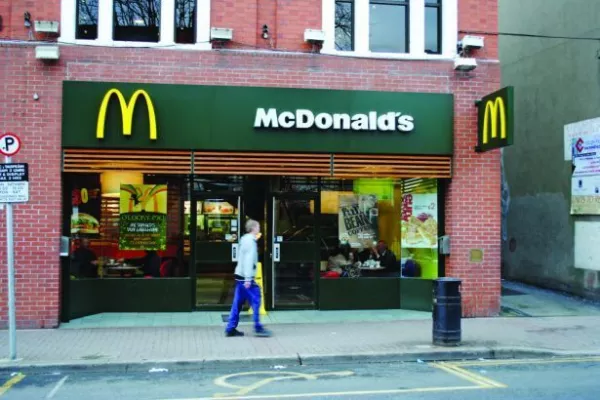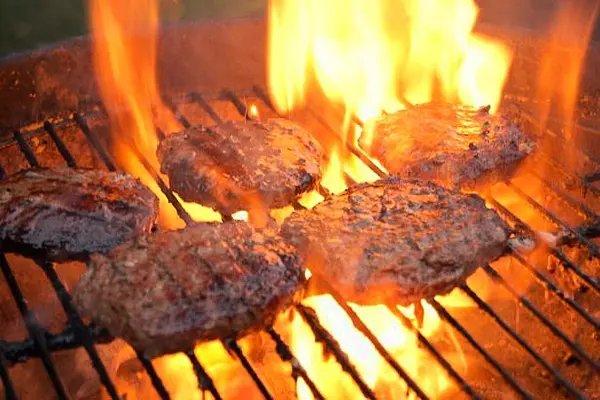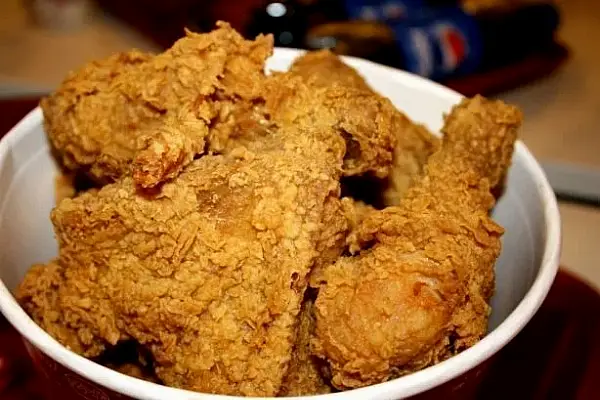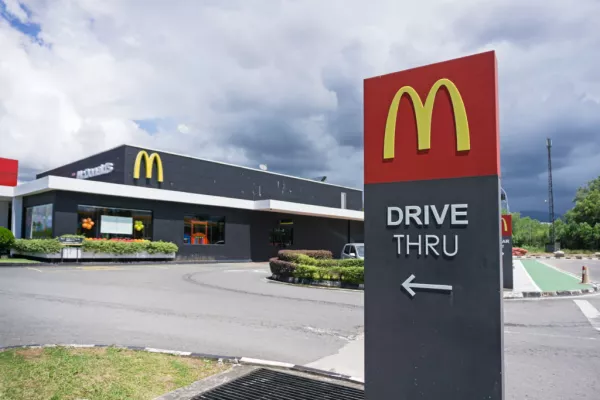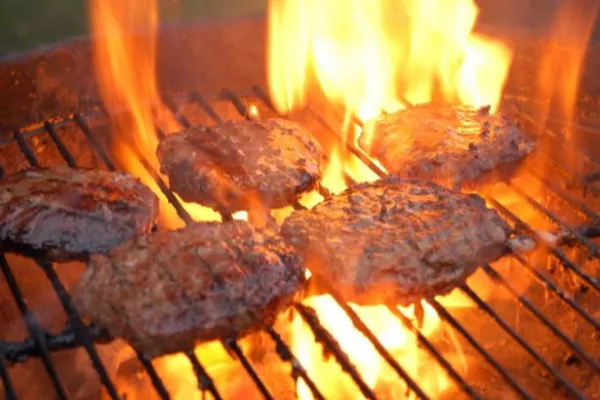McDonald’s Corp, reeling from an industrywide restaurant slump and slowing growth from its all-day breakfast push, is looking to beverages to help perk up the business.
The world’s biggest food-service company, which last year focused its advertising on cheeseburgers and chicken sandwiches, plans to offer $1 sodas and $2 McCafe specialty drinks across the US. It’s turning to higher-margin beverages at a time when cheap grocery prices are prodding more Americans to eat at home. The drink promotion may also help McDonald’s cope with the eventual rebound in food costs.
McDonald’s has been revamping its menu and marketing since Steve Easterbrook took the helm almost two years ago. Along with the introduction of all-day breakfast, Easterbrook has relied more on discounts and promotions across the country. Last year, the chain advertised two-for-$2 and two-for-$5 deals to bring back diners they’d lost after nixing its popular Dollar Menu.
McDonald’s leads a $228 billion US fast-food industry that faces slackening growth. After increasing 2.4 per cent last year, revenue gains will slow to 1.5 per cent this year and 1.6 per cent in 2018, data from researcher IBISWorld show.
“Demand has been a little weak,” said Jack Russo, analyst at Edward D. Jones & Co. “A lot of these guys think they’ve got to keep promoting to keep people coming in the door.”
The McDonald’s promotion, which starts in April, will include soft drinks of any size for $1. For a limited time, customers can also buy McCafe beverages such as smoothies, frappes and espresso drinks for $2. At stores in Chicago on Tuesday, small McCafe frappes sold for between $2.69 and $3.09. The chain plans to support the rollout with national advertising.
The strategy aims to create “noticeable changes” for customers, said Adam Salgado, vice president of US marketing at Oak Brook, Illinois-based McDonald’s. “It’s adding another layer of great value for customers with more choices.”
The shift from food to drink may reflect a changing environment. Over the past several years, profits have been helped by cheaper commodity prices. But that may not last much longer: the consumer-price index rose a larger-than-forecast 0.6 per cent in January, the most in almost four years, Labor Department figures show.
Higher Margins
Snack maker PepsiCo Inc said on a 15 February conference call that it expects commodity inflation to accelerate this year. Potbelly Corp, a US sandwich chain, also warned about rising costs. Advertising drinks, which typically have higher profit margins than food, is easier on the bottom line.
Beverages are “some of the highest-margin products, so they can probably afford to do it,” said Peter Saleh, an analyst at BTIG LLC. Gross margins for drinks can be as high as about 90 per cent, while food is usually about 65 per cent to 70 per cent, Saleh said.
McDonald’s competitors are making their own overtures toward budget-minded diners. Wendy’s Co is continuing its four-for-$4 meal deal, which includes a cheeseburger, nuggets, fries and a drink. Starbucks Corp and Dunkin’ Donuts, meanwhile, both have rewards programmes that lock customers in with free and discounted beverages and food.
Fast-food customers always are looking for a deal, Salgado said.
“We know that there are budget-conscious consumers out there,” he said. “Value will always be a part of our strategy.”
News by Bloomberg, edited by Hospitality Ireland
